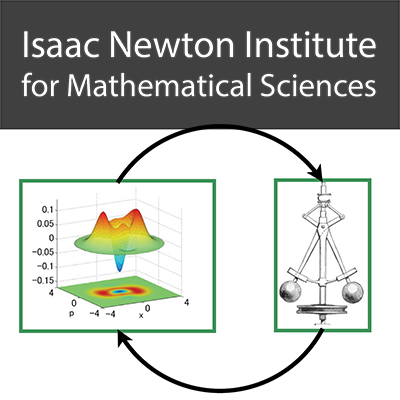Quantum control of magnon modes in ferromagnet
37 mins 41 secs,
68.94 MB,
MP3
44100 Hz,
249.76 kbits/sec
Share this media item:
Embed this media item:
Embed this media item:
About this item

| Description: |
Nakamura, Y (Tokyo University)
Wednesday 06 August 2014, 13:30-14:10 |
|---|
| Created: | 2014-08-12 17:30 |
|---|---|
| Collection: | Quantum Control Engineering: Mathematical Principles and Applications |
| Publisher: | Isaac Newton Institute |
| Copyright: | Nakamura, Y |
| Language: | eng (English) |
| Distribution: |
World
|
| Explicit content: | No |
| Aspect Ratio: | 16:9 |
| Screencast: | No |
| Bumper: | UCS Default |
| Trailer: | UCS Default |
| Abstract: | Concepts and technologies of quantum coherent control were initially developed in microscopic systems such as atoms, nuclear and electron spins. However, triggered by the emergence of quantum information science, they have recently been extended toward more macroscopic degrees of freedom such as collective excitations in solid. The most pronounced example is electromagnetic excitations in superconducting circuits, in which superconducting qubits have been realized by exploiting the nonlinearity provided by Josephson junctions. The artificial two-level systems, or atoms, coupled with superconducting resonators and other quantum systems have been enjoying rich physics and applications of circuit quantum electrodynamics (circuit QED) and hybrid quantum systems.
Spin-wave excitations (magnons) in magnetic materials are another well-known collective excitation which is commonly studied in magnetism and spintronics. Sometimes they have a long lifetime, for example, in the typical ferromagnetic insulator, yttrium iron garnet (YIG). We have investigated ferromagnetic resonance of a mm-scale YIG sphere at low temperature (10 mK) and low power (-140 dBm). The sphere is placed in a microwave cavity resonator made of oxygen-free copper and biased with a static field of about 0.3 T. We demonstrate coherent coupling between the magnon mode (the Kittel mode) with the microwave cavity mode (10 GHz), even in the quantum limit where both the average magnon and photon numbers are less than one. We also discuss how to couple the magnon mode with a superconducting qubit via a resonator. Coherent coupling with a qubit enables quantum control and measurement of the magnon excitations and thus opens a field of quantum magnonics. This work was done in collaboration with Y. Tabuchi, S. Ishino, T. Ishikawa, R. Yamazaki, and K. Usami. |
|---|---|
Available Formats
| Format | Quality | Bitrate | Size | |||
|---|---|---|---|---|---|---|
| MPEG-4 Video | 640x360 | 1.93 Mbits/sec | 545.60 MB | View | Download | |
| WebM | 640x360 | 614.74 kbits/sec | 169.52 MB | View | Download | |
| iPod Video | 480x270 | 522.2 kbits/sec | 144.00 MB | View | Download | |
| MP3 * | 44100 Hz | 249.76 kbits/sec | 68.94 MB | Listen | Download | |
| Auto | (Allows browser to choose a format it supports) | |||||

